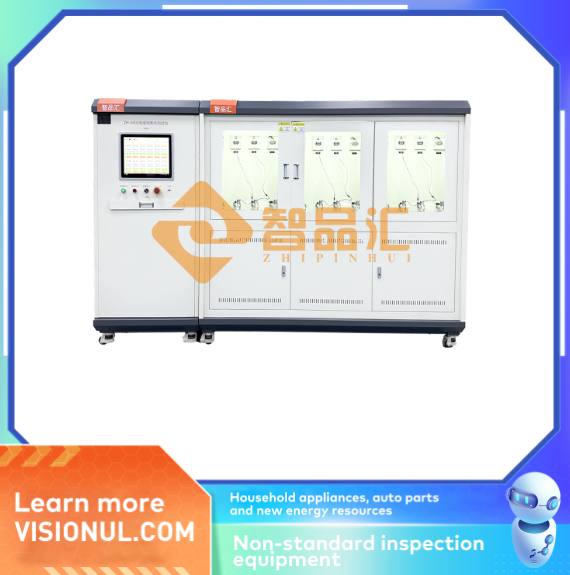Immersion heater tube life test: Defining durability limits through exposure to water and heat.
In the core components of appliances such as electric water heaters and instant hot water taps, the immersion heating element is the "heart" that directly converts electrical energy into heat. Since it is constantly submerged in water, it must withstand the alternating impacts of high and low temperatures, as well as the continuous corrosion from the water. Its lifespan directly determines the safety and durability of the appliance. Laboratory life-cycle testing simulates extreme operating conditions, subjecting each heating element to rigorous "water and fire" tests before it leaves the factory, thus defining the limits of its reliable operation through data analysis.
1. Heating Cycle Life Test: Withstanding the "Fatigue Test" of Repeated Temperature Changes
The typical operation of a submersible heating element involves repeatedly switching between "heating to high temperature with power on" and "cooling in cold water with power off." This temperature fluctuation can easily cause fatigue in the metal tube wall. The heating cycle test rig simulates this process: the heating element is fully immersed in a water tank and operated in a cycle of "heating to 95°C with power on → cooling to 20°C with power off," completing 8 cycles per hour for a total of 10,000 cycles—equivalent to a typical household using a water heater 10 times a day for 3 years.
2. Water Quality Corrosion Life Test: Withstanding the "Chronic Erosion" of Different Water Qualities
Variations in water quality across different regions (such as hard water, acidic water, and chlorinated water) significantly impact the corrosion rate of heating elements. The water quality test chamber accurately simulates these complex scenarios. In the hard water corrosion test, simulated hard water with a calcium and magnesium ion concentration of 300 mg/L is added to the tank. The heating element operates continuously for 5000 hours under these conditions, with the scale thickness on the tube wall measured every 100 hours. When the scale thickness exceeds 0.5 mm, the heating efficiency is tested (allowable reduction ≤8%), and the "dry-burn protection" function of the heating element is verified to ensure it does not malfunction due to scale buildup.
3. Pressure Resistance and Insulation Life Testing: A "Double-Layered Defense" for Safety
Immersion heating elements are constantly exposed to pressurized water and are in direct contact with it, making their structural integrity and electrical insulation crucial for safety. A pressure cycling test rig applies 1.2 times the rated working pressure (e.g., 0.96MPa for a typical 0.8MPa household water heater) to the heating element, running 2000 cycles of "pressurization → maintaining pressure for 30 minutes → depressurization" to simulate the pressure fluctuations during water replenishment and heating. After testing, a helium mass spectrometer leak detector is used to detect any micro-leaks; the leak rate must be ≤1×10⁻⁷ Pa·m³/s, ensuring no leakage due to pressure fatigue. Electrical insulation performance is tested using an insulation resistance and high-voltage tester. After 10,000 heating cycles, the device measures the insulation resistance at both cold (25℃) and hot (90℃) temperatures: cold resistance ≥500MΩ, hot resistance ≥100MΩ. Furthermore, during a 1500V AC high-voltage test lasting 1 minute, there must be no breakdown or arcing. For heating elements with grounding, the test simulates a faulty grounding scenario to verify that the ground fault protection device can cut off power within 0.1 seconds, providing the ultimate safety measure for users.
Extreme Load Life Test: The "Ultimate Challenge" to Withstand Overload Stress
In real-world use, voltage fluctuations or excessive scale buildup can lead to excessive load on the heating element. The overload life test system is specifically designed to verify its ability to withstand such stress. The equipment subjects the heating element to 1.1 times the rated voltage (e.g., 220V to 242V) for 1000 hours, continuously monitoring its surface temperature to ensure it remains below the safety threshold (typically ≤120°C) and monitoring the resistance of the heating wire (within a permissible fluctuation range of ±5%). If the heating wire melts, the tube wall overheats and deforms, etc., it is deemed unable to withstand the overload. For heating elements in instantaneous water heaters (such as instant hot water taps), the test also includes a "dry-burn protection life" verification: the heating element is deliberately energized without water, and the activation time of the dry-burn protection device (such as a thermal fuse or thermal relay) is recorded (≤10 seconds). This process is repeated 50 times. The pass criteria are that the protection device must reliably activate each time, and the heating element must resume normal operation after activation—this test provides crucial safety assurance for users in case of accidental misuse.
Our company specializes in manufacturing non-standard testing equipment for household appliances and their components. We have extensive experience in this area of non-standard testing. If you have any questions or need to discuss related testing requirements, please feel free to contact us. We look forward to hearing from you.